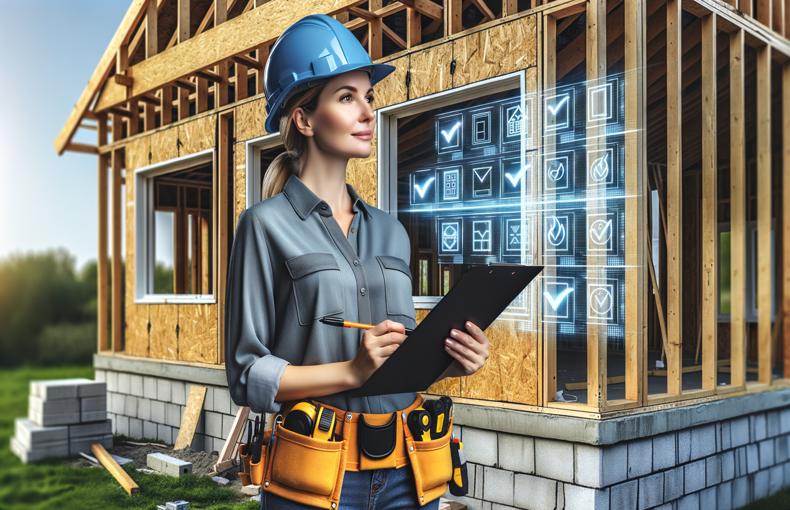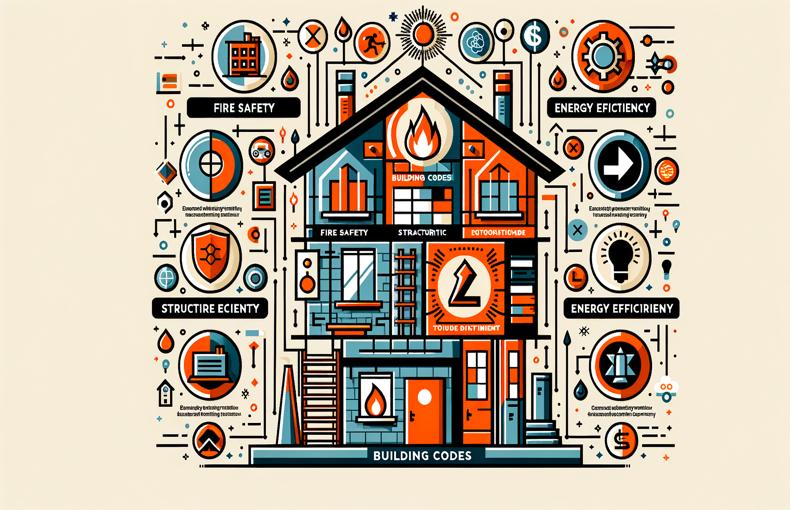Mastering Local Building Codes: A Guide to Understanding Regulations for Your Project
When embarking on a construction or renovation project, understanding local building codes is one of the most critical steps to ensuring your project is compliant, safe, and efficient. Navigating these regulations may seem daunting, but with the right guidance, you can master the codes in your area and save time, money, and potential legal headaches. This guide will help you get a clear understanding of building codes and their importance, how to research them, and how to apply them effectively in your project.
What Are Building Codes and Why Are They Important?
Building codes are a set of regulations established by local governments to ensure the safety, health, and general welfare of building occupants. These codes provide specific guidelines on construction standards, structural integrity, electrical wiring, plumbing, fire safety, and energy efficiency.
Why they matter:
- Safety: Building codes exist to protect you and the future occupants of your home. They help minimize risks related to fire hazards, structural collapses, and improper electrical or plumbing installations.
- Compliance: Failing to meet building codes can result in fines, legal issues, or project delays. In extreme cases, you may be forced to tear down or modify non-compliant work.
- Resale Value: When it comes time to sell your property, potential buyers (and their inspectors) will check to ensure your home meets local codes. Non-compliant homes may face difficulties in selling or experience a reduced market value.
How Are Building Codes Created and Updated?
Local municipalities or state governments are responsible for adopting and enforcing building codes. Most localities base their codes on national or international standards, such as the International Building Code (IBC) or the International Residential Code (IRC), which are regularly updated to reflect new technologies and safety concerns.
Tip: Regular updates to building codes mean that what was compliant a decade ago might not be today. Always check the most current version of your area’s building codes before starting a new project.
How to Research Building Codes in Your Area
Understanding the building codes in your specific region can be tricky since they vary from place to place. However, with the right approach, you can navigate this process effectively.
-
Check Your Local Building Department: Most municipalities have a local building department or permitting office where you can access the current building codes. Visit their website or office to find codebooks, resources, and local amendments that are unique to your area.
-
Online Code Resources: Many states and cities publish their codes online. Websites like the International Code Council (ICC) and UpCodes offer searchable databases that can help you find the relevant codes for your area.
-
Consult with a Professional: If you're unsure about specific code requirements, it's worth consulting with a professional such as an architectural drafter, contractor, or building inspector. They can help you interpret the codes and advise you on how to stay compliant throughout your project.
Key Areas Covered by Building Codes
Building codes cover a wide range of areas, each essential to the success of your construction or renovation project. Here are some of the most critical sections to consider:
-
Structural Requirements: Codes define the minimum standards for foundations, framing, and load-bearing walls to ensure stability and safety.
-
Fire Safety: Fire-resistant materials, sprinkler systems, smoke detectors, and escape routes are mandated in building codes to protect against fire hazards.
-
Plumbing and Electrical Systems: Proper installation of plumbing, wiring, and HVAC systems is vital to meet code standards for safety and functionality.
-
Energy Efficiency: Modern building codes increasingly focus on energy efficiency, specifying insulation standards, window types, and energy-efficient appliances to reduce environmental impact and utility costs.
Common Code Violations to Avoid
Even experienced builders and homeowners can overlook certain building codes. Here are some of the most common violations:
-
Improper Deck Construction: Many DIY decks fail to meet code standards, especially when it comes to railings, footings, and staircases.
-
Inadequate Fire Protection: Failing to install smoke detectors or using non-compliant materials in fire-prone areas can result in hefty fines.
-
Electrical Issues: Unpermitted electrical work or improper wiring setups are frequent code violations that can cause significant safety hazards.
-
Non-Compliant Stairways and Railings: Stairs and handrails have specific requirements regarding their height, width, and design to ensure they are safe to use.
The Permitting Process: Navigating Approvals and Inspections
Once you're familiar with your local building codes, the next step is obtaining the necessary permits and approvals for your project. This often involves submitting plans to your local building department for review. Depending on the scope of the project, an inspector may need to visit your property during construction to ensure compliance.
Steps to take:
- Submit Plans: Include detailed architectural plans that demonstrate how your project meets all local codes.
- Inspections: A building inspector will typically visit your site at various stages of construction to ensure compliance.
- Final Approval: Once your project is complete and passes inspection, you’ll receive a certificate of occupancy or final approval, allowing you to use the space legally.
Tips for Ensuring Compliance Throughout Your Project
-
Start Early: Research building codes well in advance of your project. Factor code requirements into your design and budgeting process.
-
Hire Licensed Professionals: Working with licensed architects, contractors, or architectural drafters can help ensure your project meets all local codes. Professionals often have direct experience dealing with building departments and navigating approvals.
-
Stay Informed on Changes: Building codes are continually updated, so stay informed on the latest requirements by checking in with your local building department or subscribing to industry newsletters.
External Resources for Further Information
- International Code Council (ICC): Provides access to national and international building code standards.
- UpCodes: A searchable online database for building codes in various regions.
- National Fire Protection Association (NFPA): Offers resources on fire safety codes and standards.
Conclusion
Mastering local building codes is an essential step to ensuring the success and safety of your construction or renovation project. By familiarizing yourself with the regulations in your area, consulting professionals when needed, and following the permitting process, you can avoid costly mistakes and create a compliant, high-quality build. Stay informed and proactive to ensure a smooth project from start to finish.
By understanding and adhering to these critical guidelines, you set yourself up for success while ensuring that your project not only meets the necessary safety standards but also adds value to your property.











